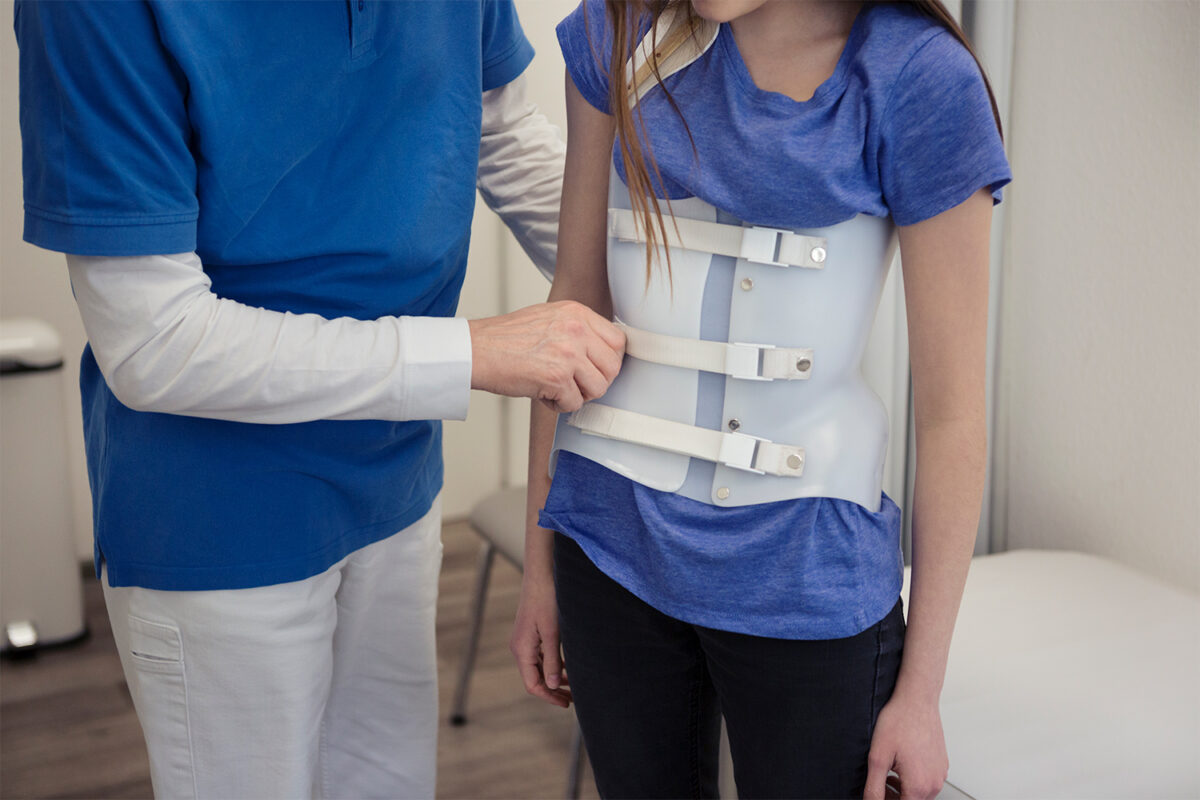Scoliosis surgery is typically recommended for individuals with severe spinal curvature that is causing pain, difficulty breathing, or other complications. The surgery involves straightening the spine and fusing the affected vertebrae together using metal rods, screws, or hooks. While the surgery can provide significant relief and improve quality of life, it is important to understand that the recovery process can be lengthy and require patience and dedication.
Understanding the Recovery Process
The recovery process after scoliosis surgery can vary from person to person, but generally, it takes several months to a year to fully recover. Immediately after surgery, patients are typically monitored in the hospital for a few days to ensure that there are no complications. Pain medication is often prescribed to manage discomfort during this time. Once discharged, patients will need to take it easy and gradually increase their activity level over time.

Managing Pain and Discomfort
Pain and discomfort are common after scoliosis surgery, but there are several strategies to manage these symptoms. Pain medication, such as opioids or nonsteroidal anti-inflammatory drugs (NSAIDs), may be prescribed by the surgeon. It is important to follow the prescribed dosage and consult with the healthcare provider if the pain is not adequately controlled. Additionally, applying ice packs or using heat therapy can help alleviate pain and reduce swelling. Engaging in relaxation techniques, such as deep breathing exercises or meditation, can also provide relief.
Thérapie physique et réadaptation
Physical therapy and rehabilitation play a crucial role in the recovery process after scoliosis surgery. A physical therapist will work closely with the patient to develop a personalized exercise program that focuses on strengthening the core muscles, improving flexibility, and restoring normal movement patterns. These exercises may include stretching, strengthening exercises, and postural correction techniques. Physical therapy sessions may be conducted in a clinic or at home, depending on the individual’s needs.
Post-Surgery Restrictions and Limitations
Following scoliosis surgery, there will be certain restrictions and limitations that patients need to adhere to. These restrictions may include avoiding heavy lifting, bending, or twisting for a certain period of time. It is important to follow these restrictions to prevent complications and ensure proper healing of the spine. The surgeon will provide specific instructions regarding these restrictions, and it is crucial to ask any questions or seek clarification if needed.
Monitoring and Follow-Up Appointments
Regular monitoring and follow-up appointments are essential after scoliosis surgery. These appointments allow the surgeon to assess the progress of the healing process and address any concerns or complications that may arise. X-rays or other imaging tests may be performed to evaluate the fusion and alignment of the spine. The frequency of these appointments will vary depending on the individual’s progress, but they are typically scheduled at regular intervals during the first year after surgery.
Complications et risques potentiels
While scoliosis surgery is generally safe, there are potential complications and risks associated with the procedure. These can include infection, bleeding, nerve damage, blood clots, or failure of the fusion to heal properly. It is important to be aware of these risks and report any unusual symptoms or concerns to the healthcare provider promptly. By closely following the post-surgery care instructions and attending follow-up appointments, the risk of complications can be minimized.

Soutien psychologique et émotionnel
Scoliosis surgery can have a significant impact on a person’s psychological and emotional well-being. It is common for patients to experience feelings of anxiety, depression, or body image issues. It is important to seek psychological and emotional support during this time. This can be done through individual therapy, support groups, or talking to friends and family. Connecting with others who have undergone similar surgeries can provide a sense of understanding and support.
Long-Term Outcomes and Prognosis
The long-term outcomes and prognosis following scoliosis surgery are generally positive. The surgery aims to correct the spinal curvature and alleviate pain and other symptoms. Most patients experience a significant improvement in their quality of life and are able to resume their normal activities. However, it is important to note that the success of the surgery depends on various factors, including the severity of the curvature, the age of the patient, and their overall health.
Maintaining Spinal Health and Preventing Recurrence
After scoliosis surgery, it is important to take steps to maintain spinal health and prevent recurrence. This includes practicing good posture, engaging in regular exercise, and avoiding activities that put excessive strain on the spine. It is also important to maintain a healthy weight and avoid smoking, as these factors can negatively impact spinal health. Regular check-ups with the surgeon or primary care physician can help monitor the spine and address any concerns or issues that may arise.
Lifestyle Modifications and Adaptations
Scoliosis surgery may require certain lifestyle modifications and adaptations. This can include making changes to the home environment to ensure safety and accessibility, using assistive devices such as braces or walkers, or modifying certain activities to accommodate the limitations imposed by the surgery. It is important to work closely with healthcare professionals and occupational therapists to identify and implement these modifications to ensure a smooth transition back to daily life.

Support Groups and Resources for Patients and Families
Support groups and resources are invaluable for patients and families navigating the journey after scoliosis surgery. These groups provide a platform for individuals to connect with others who have undergone similar surgeries, share experiences, and offer support. Online forums, social media groups, and local support groups can be excellent resources for finding support and information. Additionally, there are numerous websites, books, and educational materials available that provide valuable information about scoliosis surgery and the recovery process.
Conclusion
After scoliosis surgery, it is important to be aware of the post-surgery care and long-term outcomes that come with this procedure. Understanding the recovery process, managing pain and discomfort, engaging in physical therapy and rehabilitation, adhering to post-surgery restrictions and limitations, attending monitoring and follow-up appointments, being aware of potential complications and risks, seeking psychological and emotional support, focusing on long-term outcomes and prognosis, maintaining spinal health and preventing recurrence, making lifestyle modifications and adaptations, and accessing support groups and resources are all crucial aspects of the journey after scoliosis surgery. By being well-informed and proactive, individuals can optimize their recovery and improve their overall well-being.
Références
- Monticone, M., Ambrosini, E., Cazzaniga, D., et al. (2016). “Active self-correction and task-oriented exercises reduce spinal deformity and improve quality of life in subjects with mild adolescent idiopathic scoliosis: Results of a randomized controlled trial.” European Spine Journal, 25(10), 3113-3121.
- Negrini, S., Donzelli, S., Aulisa, A. G., et al. (2018). "2016 SOSORT guidelines : Traitement orthopédique et rééducatif de la scoliose idiopathique pendant la croissance." Scoliose et troubles spinaux, 13(1), 3.
- Hresko, M. T. (2013). "Scoliose idiopathique chez les adolescents". The New England Journal of Medicine, 368(9), 834-841.
- Weinstein, S. L., Dolan, L. A., Cheng, J. C., et al. (2008). "Adolescent idiopathic scoliosis" (scoliose idiopathique de l'adolescent). The Lancet, 371(9623), 1527-1537.
- Lonstein, J. E. et Carlson, J. M. (1984). "The prediction of curve progression in untreated idiopathic scoliosis during growth". The Journal of Bone and Joint Surgery, 66(7), 1061-1071.
- Ceballos-Laita, L., Tejero-Garcés, L., & Jiménez-Castillejo, R. (2018). “The role of physiotherapy in adolescent idiopathic scoliosis: a systematic review.” Scoliosis and Spinal Disorders, 13(1), 18.
- Richards, B. S., Bernstein, R. M., D'Amato, C. L. et Thompson, G. H. (2005). "Standardisation des critères pour les études sur les attelles de scoliose idiopathique de l'adolescent : SRS Committee on Bracing and Nonoperative Management". Spine (Phila Pa 1976), 30(18), 2068-2075.
- Negrini, S., Grivas, T. B., Kotwicki, T., et al. (2006). “Why do we treat adolescent idiopathic scoliosis? What we want to obtain and to avoid for our patients. SOSORT 2005 consensus paper.” Scoliosis, 1(1), 4.
- Wong, M. S., Cheng, J. C., & Lam, T. P. (2008). “The effect of rigid versus flexible spinal orthoses on spine deformity and body symmetry in adolescent idiopathic scoliosis.” European Spine Journal, 17(8), 1102-1108.

